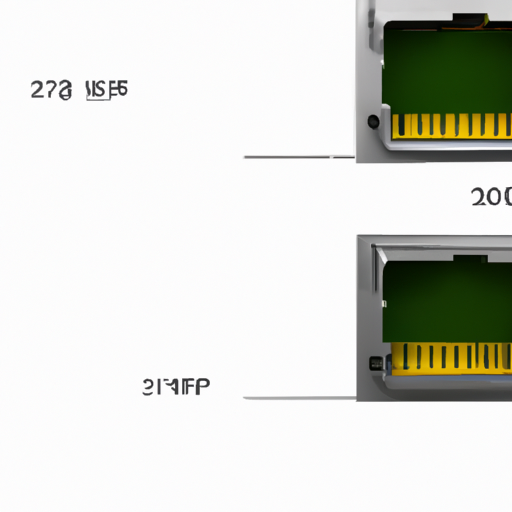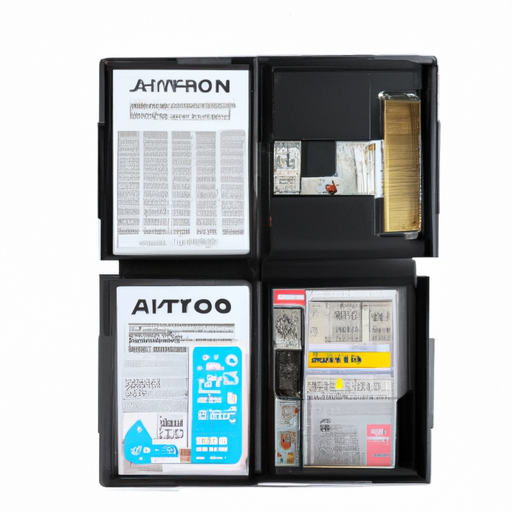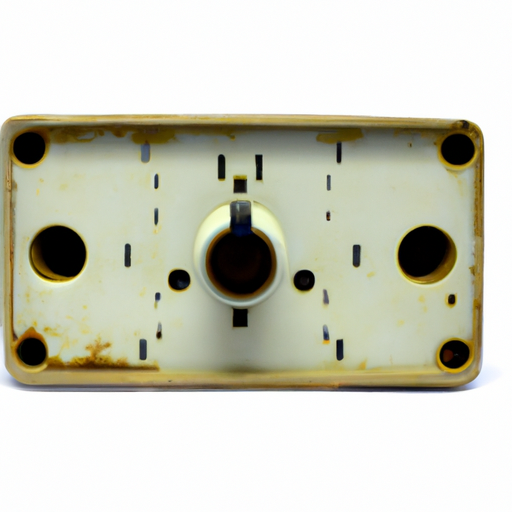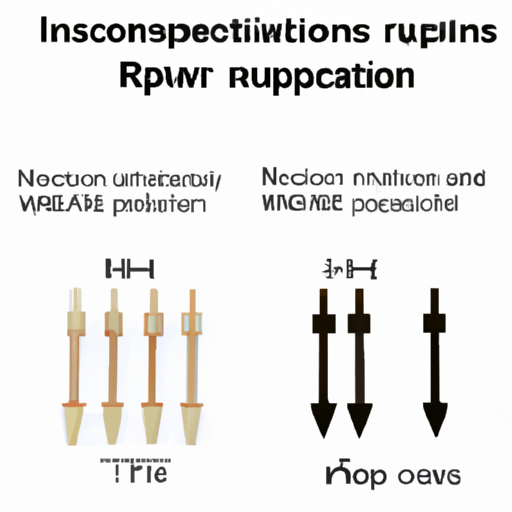
What are the main application directions of non-inductive resistors?
What are the Main Application Directions of Non-Inductive Resistors? I. Introduction Non-inductive resistors are specialized components designed to minimize inductance, making them essential in various electrical and electronic applications. Unlike traditional resistors, which can introduce unwanted inductive effects, non-inductive resistors are engineered to provide stable resistance without the interference of inductance. This characteristic is crucial in high-frequency applications where inductance can distort signals and affect performance. In this blog post, we will explore the main application directions of non-inductive resistors, highlighting their significance in power electronics, measurement equipment, audio systems, telecommunications, automotive applications, and industrial settings. II. Understanding Non-Inductive Resistors A. Characteristics of Non-Inductive Resistors 1. Construction and Design Non-inductive resistors are typically constructed using materials and designs that minimize inductive effects. They often feature a flat or spiral configuration, which helps to cancel out the magnetic fields generated by current flow. This design is crucial for maintaining accuracy in applications where inductance can lead to significant errors. 2. Electrical Properties The electrical properties of non-inductive resistors include low resistance values, high power ratings, and excellent thermal stability. These properties make them suitable for applications requiring precise control of electrical parameters without the influence of inductive reactance. B. Comparison with Inductive Resistors Inductive resistors, on the other hand, can introduce unwanted inductance into a circuit, leading to signal distortion and reduced performance in high-frequency applications. Non-inductive resistors are preferred in scenarios where signal integrity is paramount, such as in RF applications and precision measurement systems. C. Advantages of Non-Inductive Resistors The primary advantages of non-inductive resistors include their ability to maintain signal integrity, high precision, and reliability in various operating conditions. These characteristics make them indispensable in modern electronic systems. III. Key Application Areas A. Power Electronics 1. Role in Power Conversion Systems In power electronics, non-inductive resistors play a critical role in power conversion systems, such as inverters and converters. They are used to manage energy flow, ensuring that power is converted efficiently from one form to another without introducing significant losses due to inductance. 2. Use in Inverters and Converters Non-inductive resistors are particularly valuable in applications involving pulse-width modulation (PWM) and other switching techniques, where rapid changes in current can lead to inductive effects. Their use helps to stabilize the output and improve overall system performance. B. Measurement and Testing Equipment 1. Application in Precision Measurement Devices Non-inductive resistors are essential in precision measurement devices, such as digital multimeters and oscilloscopes. Their low inductance ensures that measurements are accurate and reliable, even at high frequencies. 2. Use in Calibration Standards In calibration standards, non-inductive resistors are used to provide reference points for testing and validating other measurement devices. Their stability and precision make them ideal for this purpose. C. Audio Equipment 1. Importance in High-Fidelity Audio Systems In high-fidelity audio systems, non-inductive resistors are crucial for maintaining sound quality. They help to prevent distortion and ensure that audio signals remain clear and accurate. 2. Role in Speaker Design and Performance Non-inductive resistors are also used in speaker design, where they contribute to the overall performance and efficiency of the system. By minimizing inductive effects, they help to deliver a more accurate sound reproduction. D. Telecommunications 1. Use in Signal Processing In telecommunications, non-inductive resistors are employed in signal processing applications, where maintaining signal integrity is vital. Their low inductance ensures that signals remain clear and free from distortion. 2. Application in RF and Microwave Circuits Non-inductive resistors are particularly important in RF and microwave circuits, where even small amounts of inductance can significantly impact performance. Their use helps to ensure that these circuits operate efficiently and effectively. E. Automotive Applications 1. Role in Electric and Hybrid Vehicles In the automotive industry, non-inductive resistors are increasingly used in electric and hybrid vehicles. They play a vital role in managing power distribution and ensuring that electrical systems operate smoothly. 2. Use in Battery Management Systems Non-inductive resistors are also utilized in battery management systems, where they help to monitor and control battery performance. Their precision and reliability are essential for ensuring the safety and efficiency of these systems. F. Industrial Applications 1. Use in Load Testing and Simulation In industrial settings, non-inductive resistors are used for load testing and simulation purposes. They provide accurate resistance values without introducing inductive effects, making them ideal for testing equipment and systems. 2. Application in Automation and Control Systems Non-inductive resistors are also employed in automation and control systems, where they help to maintain precise control over electrical parameters. Their reliability and stability are crucial for ensuring the smooth operation of these systems. IV. Emerging Trends and Innovations A. Advances in Material Science 1. Development of New Non-Inductive Materials Recent advances in material science have led to the development of new non-inductive materials that offer improved performance and efficiency. These materials are designed to enhance the electrical properties of non-inductive resistors, making them even more effective in various applications. 2. Impact on Performance and Efficiency The use of advanced materials can significantly impact the performance and efficiency of non-inductive resistors, allowing for smaller, lighter, and more efficient designs that meet the demands of modern technology. B. Integration with Smart Technologies 1. Role in IoT Devices As the Internet of Things (IoT) continues to grow, non-inductive resistors are being integrated into smart devices to enhance their performance. Their ability to maintain signal integrity is crucial for the reliable operation of IoT applications. 2. Application in Smart Grids and Energy Management Non-inductive resistors are also finding applications in smart grids and energy management systems, where they help to optimize energy distribution and improve overall system efficiency. C. Sustainability and Environmental Considerations 1. Eco-Friendly Manufacturing Processes With increasing awareness of environmental issues, manufacturers are focusing on eco-friendly processes for producing non-inductive resistors. This shift is aimed at reducing the environmental impact of production while maintaining high-quality standards. 2. Recyclability and Lifecycle Assessment The recyclability of non-inductive resistors is also becoming a significant consideration, with manufacturers assessing the lifecycle of their products to ensure sustainability and minimize waste. V. Challenges and Limitations A. Cost Considerations One of the primary challenges facing non-inductive resistors is their cost. The specialized materials and manufacturing processes required to produce them can lead to higher prices compared to traditional resistors. B. Thermal Management Issues Thermal management is another challenge, as non-inductive resistors can generate heat during operation. Effective cooling solutions are necessary to ensure their reliability and longevity in high-power applications. C. Market Competition and Alternatives The market for resistors is highly competitive, with various alternatives available. Non-inductive resistors must continually demonstrate their advantages to maintain their position in the market. VI. Conclusion In summary, non-inductive resistors play a vital role in various applications across multiple industries. Their unique characteristics make them indispensable in power electronics, measurement equipment, audio systems, telecommunications, automotive applications, and industrial settings. As technology continues to evolve, non-inductive resistors will likely see further innovations and applications, particularly in the realms of smart technology and sustainability. Their importance in modern technology cannot be overstated, as they contribute to the efficiency, reliability, and performance of countless electronic systems. VII. References A. Academic Journals - IEEE Transactions on Power Electronics - Journal of Electronic Materials B. Industry Reports - Market Research Reports on Resistor Technologies - Industry Analysis of Power Electronics Components C. Technical Standards and Guidelines - IEC Standards for Resistors - ANSI Standards for Electrical Components This blog post provides a comprehensive overview of the main application directions of non-inductive resistors, emphasizing their significance in modern technology and the challenges they face in the evolving market landscape.
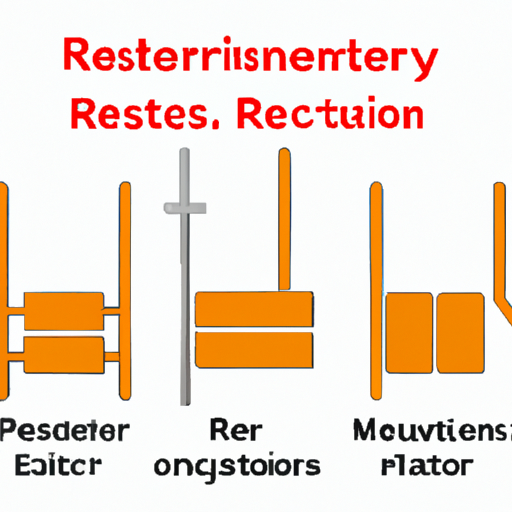
What industries are the application scenarios of resistor 4 included in?
What Industries Are the Application Scenarios of Resistor 4 Included In? I. IntroductionIn the world of electronics, resistors play a crucial role in controlling the flow of electric current. Among the various types of resistors, Resistor 4 stands out due to its unique specifications and versatility. This blog post will explore the significance of Resistor 4, its technical characteristics, and the diverse industries that leverage its capabilities. Understanding the application scenarios of Resistor 4 can provide insights into its importance in modern technology. II. Understanding Resistor 4 A. Technical Specifications and CharacteristicsResistor 4 is defined by several key specifications that determine its performance in electronic circuits:1. **Resistance Value**: The resistance value of Resistor 4 is typically measured in ohms (Ω) and can vary widely depending on the application. This value dictates how much current will flow through the resistor when a voltage is applied.2. **Power Rating**: The power rating indicates the maximum amount of power the resistor can dissipate without being damaged. This is crucial for ensuring that the resistor operates safely within its limits.3. **Tolerance Levels**: Tolerance refers to the degree of variation in the resistance value. A lower tolerance level means a more precise resistor, which is essential in applications requiring high accuracy. B. Types of Resistor 4Resistor 4 comes in various forms, each suited for specific applications:1. **Fixed Resistors**: These resistors have a constant resistance value and are commonly used in circuits where a specific resistance is required.2. **Variable Resistors**: Also known as potentiometers, these allow users to adjust the resistance value, making them ideal for applications like volume controls in audio equipment.3. **Specialty Resistors**: These include thermistors and photoresistors, which change resistance based on temperature or light exposure, respectively. They are used in specialized applications such as temperature sensing and light detection. III. Application Scenarios of Resistor 4Resistor 4 finds applications across a wide range of industries, each benefiting from its unique properties. A. Consumer ElectronicsThe consumer electronics sector is one of the largest markets for Resistor 4. 1. **Smartphones and Tablets**: Resistor 4 is integral to the functioning of smartphones and tablets, where it helps manage power distribution and signal integrity. It ensures that components operate within safe limits, enhancing device longevity.2. **Home Appliances**: In home appliances like washing machines and microwaves, Resistor 4 is used in control circuits to regulate functions and improve energy efficiency.3. **Audio and Video Equipment**: Resistor 4 plays a vital role in audio and video equipment, where it helps in signal processing and amplification, ensuring high-quality sound and image output. B. Automotive IndustryThe automotive industry has increasingly integrated advanced electronics, making Resistor 4 essential.1. **Engine Control Units (ECUs)**: Resistor 4 is used in ECUs to monitor and control engine performance, optimizing fuel efficiency and reducing emissions.2. **Infotainment Systems**: In modern vehicles, Resistor 4 is crucial for infotainment systems, managing audio signals and ensuring seamless connectivity with smartphones.3. **Safety and Navigation Systems**: Resistor 4 contributes to the functionality of safety features like anti-lock braking systems (ABS) and navigation systems, enhancing overall vehicle safety. C. TelecommunicationsThe telecommunications industry relies heavily on Resistor 4 for various applications.1. **Network Equipment**: Resistor 4 is used in routers and switches to manage signal integrity and prevent data loss during transmission.2. **Signal Processing**: In signal processing applications, Resistor 4 helps filter and amplify signals, ensuring clear communication.3. **Wireless Communication Devices**: Resistor 4 is integral to the functioning of wireless devices, where it helps manage power levels and signal strength. D. Industrial AutomationIn industrial automation, Resistor 4 plays a critical role in enhancing efficiency and reliability.1. **Robotics**: Resistor 4 is used in robotic systems to control motors and sensors, enabling precise movements and actions.2. **Control Systems**: In control systems, Resistor 4 helps regulate voltage and current, ensuring stable operation of machinery.3. **Sensors and Actuators**: Resistor 4 is essential in sensors and actuators, where it helps convert physical signals into electrical signals for processing. E. Medical DevicesThe medical industry utilizes Resistor 4 in various applications, ensuring safety and accuracy.1. **Diagnostic Equipment**: Resistor 4 is used in diagnostic devices like ECG machines, where it helps in signal processing and data accuracy.2. **Monitoring Devices**: In patient monitoring systems, Resistor 4 ensures reliable data transmission, critical for patient care.3. **Therapeutic Equipment**: Resistor 4 is also found in therapeutic devices, where it helps regulate power and ensure safe operation. F. Renewable EnergyAs the world shifts towards renewable energy, Resistor 4 plays a vital role in this transition.1. **Solar Inverters**: Resistor 4 is used in solar inverters to manage power conversion and ensure efficient energy transfer.2. **Wind Turbine Controllers**: In wind energy systems, Resistor 4 helps regulate power output and maintain system stability.3. **Energy Storage Systems**: Resistor 4 is essential in energy storage systems, where it helps manage charging and discharging cycles. IV. Case Studies A. Consumer Electronics: The Role of Resistor 4 in SmartphonesIn smartphones, Resistor 4 is crucial for managing power distribution among various components. For instance, it helps regulate the voltage supplied to the processor, ensuring optimal performance without overheating. Additionally, it plays a role in signal integrity, allowing for clear communication between the device and cellular networks. B. Automotive Applications: Enhancing Safety with Resistor 4In the automotive sector, Resistor 4 is integral to safety systems. For example, in anti-lock braking systems (ABS), it helps monitor wheel speed and prevent skidding by adjusting brake pressure. This application not only enhances safety but also improves overall vehicle performance. C. Telecommunications: Signal Integrity and Resistor 4In telecommunications, maintaining signal integrity is paramount. Resistor 4 is used in network equipment to filter and amplify signals, ensuring that data is transmitted without loss. This application is critical for maintaining high-speed internet connections and reliable communication. V. Future Trends and Innovations A. Advancements in Resistor TechnologyAs technology evolves, so does resistor technology. Innovations such as thin-film resistors and high-precision resistors are emerging, offering improved performance and reliability. B. The Impact of IoT on Resistor ApplicationsThe Internet of Things (IoT) is driving demand for more sophisticated resistors. As devices become interconnected, the need for precise and reliable resistors will continue to grow, leading to new applications and designs. C. Sustainability and Eco-Friendly Resistor DesignsWith increasing awareness of environmental issues, there is a push for sustainable resistor designs. Manufacturers are exploring eco-friendly materials and production methods to reduce the environmental impact of resistors. VI. ConclusionResistor 4 is a fundamental component in a wide array of industries, from consumer electronics to renewable energy. Its unique specifications and versatility make it indispensable in modern technology. As industries continue to evolve, the role of Resistor 4 will only become more significant, driving innovation and enhancing performance across various applications. Understanding its importance can help us appreciate the intricate workings of the technology we rely on daily. VII. References1. Academic journals on electronics and resistor technology.2. Industry reports on the applications of resistors in various sectors.3. Technical manuals and datasheets from resistor manufacturers. This comprehensive exploration of Resistor 4 highlights its critical role across multiple industries, showcasing its versatility and importance in the ever-evolving landscape of technology.
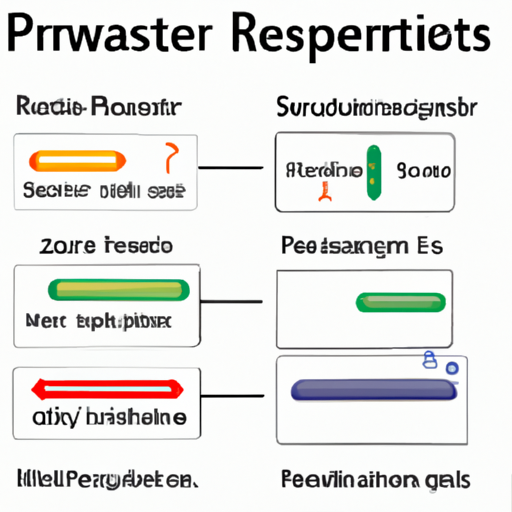
What are the important product categories for the main parameters of resistors?
What are the Important Product Categories for the Main Parameters of Resistors? I. Introduction A. Definition of ResistorsResistors are passive electronic components that limit the flow of electric current in a circuit. They are fundamental to the operation of electronic devices, serving various functions such as voltage division, current limiting, and signal conditioning. By providing a specific resistance value, resistors help control the behavior of electrical circuits, ensuring they operate within desired parameters. B. Importance of Resistors in Electronic CircuitsIn electronic circuits, resistors play a crucial role in managing current and voltage levels. They are essential for protecting sensitive components from excessive current, setting bias points in transistors, and creating reference voltages. Without resistors, circuits would be prone to malfunction, leading to potential damage and inefficiency. C. Overview of Main Parameters of ResistorsWhen selecting resistors for a specific application, several key parameters must be considered. These include resistance value, tolerance, power rating, temperature coefficient, and voltage rating. Understanding these parameters is vital for ensuring that the chosen resistor meets the requirements of the circuit. II. Types of Resistors A. Fixed ResistorsFixed resistors have a constant resistance value and are the most commonly used type in electronic circuits. They come in various materials and constructions, each with unique characteristics.1. **Carbon Composition Resistors**: Made from a mixture of carbon and a binding material, these resistors are known for their high energy absorption and ability to withstand high temperatures. However, they have a relatively high tolerance and are less stable over time.2. **Metal Film Resistors**: These resistors are made by depositing a thin layer of metal onto a ceramic substrate. They offer better stability and lower noise compared to carbon composition resistors, making them suitable for precision applications.3. **Wirewound Resistors**: Constructed by winding a metal wire around a ceramic or fiberglass core, wirewound resistors can handle high power levels and are often used in applications requiring high precision and stability. B. Variable ResistorsVariable resistors allow for adjustable resistance values, making them versatile components in various applications.1. **Potentiometers**: These are commonly used for adjusting voltage levels in circuits, such as volume controls in audio equipment. They consist of a resistive element and a movable wiper that changes the resistance.2. **Rheostats**: Similar to potentiometers, rheostats are used to control current flow. They typically have two terminals and are often used in applications requiring high power. C. Specialty ResistorsSpecialty resistors are designed for specific applications and have unique properties.1. **Thermistors**: These temperature-sensitive resistors change resistance with temperature variations. They are widely used in temperature sensing and control applications.2. **Photoresistors**: Also known as light-dependent resistors (LDRs), these components change resistance based on light intensity. They are commonly used in light-sensing applications, such as automatic lighting systems.3. **Varistors**: These voltage-dependent resistors protect circuits from voltage spikes. They are often used in surge protection devices to prevent damage from transient voltage surges. III. Main Parameters of Resistors A. Resistance Value1. **Definition and Measurement**: The resistance value, measured in ohms (Ω), indicates how much a resistor opposes the flow of electric current. It is determined by the material, length, and cross-sectional area of the resistor.2. **Importance in Circuit Design**: Selecting the correct resistance value is crucial for achieving the desired current and voltage levels in a circuit. Incorrect values can lead to circuit malfunction or component damage. B. Tolerance1. **Definition and Measurement**: Tolerance refers to the allowable deviation from the specified resistance value, expressed as a percentage. For example, a resistor with a value of 100Ω and a tolerance of ±5% can have a resistance between 95Ω and 105Ω.2. **Impact on Circuit Performance**: Tolerance affects the accuracy and reliability of circuit performance. In precision applications, low-tolerance resistors are preferred to ensure consistent operation. C. Power Rating1. **Definition and Measurement**: The power rating, measured in watts (W), indicates the maximum power a resistor can dissipate without overheating. It is determined by the resistor's construction and material.2. **Importance in Heat Dissipation**: Selecting a resistor with an appropriate power rating is essential to prevent overheating and potential failure. Resistors that exceed their power rating can become damaged or cause circuit failure. D. Temperature Coefficient1. **Definition and Measurement**: The temperature coefficient indicates how much a resistor's resistance changes with temperature, measured in parts per million per degree Celsius (ppm/°C). A lower temperature coefficient indicates better stability over temperature variations.2. **Effects on Performance in Varying Conditions**: Resistors with a low temperature coefficient are preferred in applications where temperature fluctuations are expected, as they maintain consistent performance. E. Voltage Rating1. **Definition and Measurement**: The voltage rating indicates the maximum voltage a resistor can handle without breaking down. It is crucial for ensuring that the resistor can withstand the voltage levels present in the circuit.2. **Importance in Preventing Breakdown**: Selecting a resistor with an appropriate voltage rating is vital to prevent breakdown and potential circuit damage. Exceeding the voltage rating can lead to catastrophic failure. IV. Product Categories Based on Main Parameters A. Resistance Value Categories1. **Low Resistance (Ohmic Range)**: Resistors with low resistance values (typically below 10Ω) are used in applications requiring high current flow, such as power supplies and motor controls.2. **Medium Resistance**: Medium resistance values (10Ω to 1kΩ) are commonly used in signal processing and general-purpose applications.3. **High Resistance**: High resistance values (above 1kΩ) are used in applications requiring low current flow, such as input stages of amplifiers and sensor circuits. B. Tolerance Categories1. **Standard Tolerance (±5%, ±10%)**: Standard tolerance resistors are suitable for general applications where precision is not critical.2. **Precision Tolerance (±1%, ±0.5%)**: Precision tolerance resistors are used in applications requiring high accuracy, such as instrumentation and measurement devices. C. Power Rating Categories1. **Low Power (1/8W, 1/4W)**: Low power resistors are used in low-power applications, such as signal processing circuits.2. **Medium Power (1W, 2W)**: Medium power resistors are suitable for general-purpose applications where moderate power dissipation is required.3. **High Power (5W and above)**: High power resistors are used in applications requiring significant power handling, such as power amplifiers and industrial equipment. D. Temperature Coefficient Categories1. **Standard Temperature Coefficient (±100 ppm/°C)**: Standard temperature coefficient resistors are suitable for general applications where temperature stability is not critical.2. **Low Temperature Coefficient (±50 ppm/°C)**: Low temperature coefficient resistors are preferred in precision applications where temperature variations can affect performance. E. Voltage Rating Categories1. **Low Voltage (up to 50V)**: Low voltage resistors are used in low-voltage applications, such as battery-powered devices.2. **Medium Voltage (50V to 250V)**: Medium voltage resistors are suitable for general-purpose applications where moderate voltage levels are present.3. **High Voltage (above 250V)**: High voltage resistors are used in applications requiring high voltage handling, such as power supplies and industrial equipment. V. Applications of Different Resistor Categories A. Consumer ElectronicsIn consumer electronics, resistors are used in various applications, including audio equipment, televisions, and smartphones. They help control volume, manage signal levels, and protect sensitive components. B. Industrial EquipmentResistors play a vital role in industrial equipment, where they are used for motor control, power regulation, and signal conditioning. High power and precision resistors are commonly employed in these applications. C. Automotive ApplicationsIn automotive electronics, resistors are used in various systems, including engine control units, lighting, and infotainment systems. They help manage current flow and ensure reliable operation. D. Medical DevicesResistors are critical in medical devices, where precision and reliability are paramount. They are used in monitoring equipment, diagnostic devices, and therapeutic systems. E. TelecommunicationsIn telecommunications, resistors are used in signal processing, impedance matching, and circuit protection. They help ensure reliable communication and signal integrity. VI. Conclusion A. Summary of Key PointsResistors are essential components in electronic circuits, with various types and parameters that influence their performance. Understanding the main parameters—resistance value, tolerance, power rating, temperature coefficient, and voltage rating—is crucial for selecting the right resistor for specific applications. B. Importance of Selecting the Right Resistor CategoryChoosing the appropriate resistor category based on these parameters ensures optimal circuit performance, reliability, and longevity. Whether for consumer electronics, industrial equipment, or specialized applications, the right resistor can make a significant difference. C. Future Trends in Resistor TechnologyAs technology advances, the demand for more precise, reliable, and compact resistors continues to grow. Innovations in materials and manufacturing processes are expected to lead to the development of resistors with improved performance characteristics, catering to the evolving needs of various industries. VII. References A. Academic Journals- IEEE Transactions on Electron Devices- Journal of Electronic Materials B. Industry Standards- International Electrotechnical Commission (IEC) Standards- American National Standards Institute (ANSI) Standards C. Manufacturer Specifications- Resistor datasheets from leading manufacturers such as Vishay, Yageo, and Panasonic.---This blog post provides a comprehensive overview of the important product categories for the main parameters of resistors, ensuring readers gain a thorough understanding of this essential electronic component.
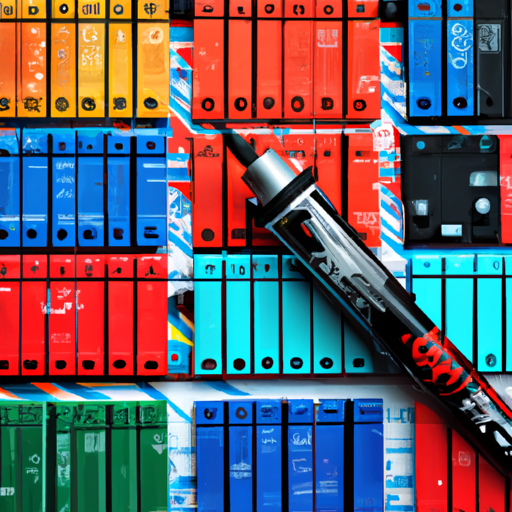
What are the product standards for unclassified components?
Unclassified components refer to products that do not belong to the category of traditional electronic components. They are usually some special-purpose devices or some new devices. These unclassified components play an increasingly important role in the field of modern electronics, so the requirements for their product standards are also getting higher and higher. Below we will introduce some product standards of unclassified components in detail. 1. MEMS devices: MEMS (Micro-Electro-Mechanical Systems) is a technology that combines micro-mechanical structures with microelectronic devices to achieve small-sized, high-performance sensors and actuators. For MEMS devices, product standards mainly include requirements for dimensional accuracy, sensitivity, response speed, power consumption, etc. In addition, since MEMS devices are usually used in special environments, such as high temperature and high pressure, there are also strict requirements for their high temperature resistance and corrosion resistance. 2. Flexible electronic devices: Flexible electronic devices are electronic devices that can be bent and stretched, and are usually used in wearable devices, flexible display screens and other fields. For flexible electronic devices, product standards mainly include requirements for flexibility, stability, wear resistance, transparency, etc. In addition, since flexible electronic devices usually need to come into contact with the human body, there are certain requirements for their biocompatibility. 3. Biosensor: A biosensor is a sensor that can detect biological molecules or parameters in an organism, and is usually used in medical diagnosis, biological monitoring and other fields. For biosensors, product standards mainly include requirements for sensitivity, specificity, stability, rapidity, etc. In addition, since biosensors usually need to come into contact with organisms, there are also strict requirements for their biocompatibility, non-invasiveness and other properties. 4. Quantum devices: Quantum devices are devices that use quantum effects to achieve functions and are usually used in quantum computing, quantum communication and other fields. For quantum devices, product standards mainly include requirements for quantum efficiency, quantum entanglement, number of quantum bits, etc. In addition, since quantum devices usually need to work in extremely low temperature environments, there are certain requirements for their low temperature resistance, stability and other properties. In general, the product standards for unclassified components mainly include requirements in terms of performance indicators, environmental adaptability, biocompatibility, etc. With the continuous development of science and technology, the product standards for unclassified components will continue to improve to meet the needs of different fields. It is hoped that the product standards for unclassified components can be continuously improved to provide better support for the development of the electronics field.
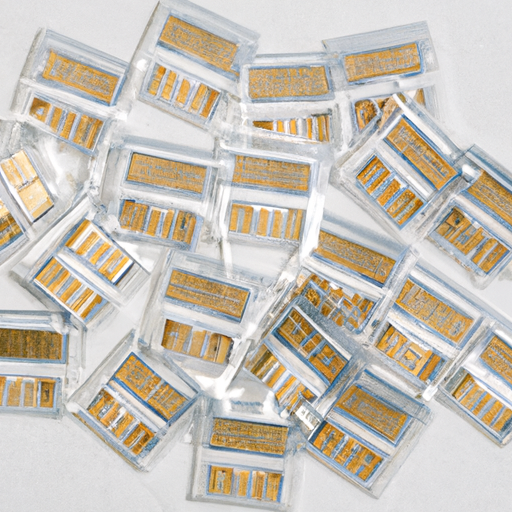
What are the latest manufacturing processes for resistor packaging?
What are the Latest Manufacturing Processes for Resistor Packaging? I. IntroductionResistor packaging is a critical aspect of electronic device design and manufacturing. It involves enclosing resistors in protective casings that ensure their functionality, reliability, and integration into various electronic circuits. As technology advances, the importance of efficient and effective resistor packaging has grown, influencing the performance and longevity of electronic devices. This blog post explores the latest manufacturing processes for resistor packaging, highlighting innovations and trends that are shaping the industry. II. Types of Resistor Packaging A. Through-Hole ResistorsThrough-hole resistors are traditional components characterized by their leads that pass through holes in a printed circuit board (PCB). They are widely used in applications where durability and ease of handling are paramount, such as in power supplies and audio equipment. The manufacturing processes for through-hole resistors have remained relatively stable, focusing on ensuring robust connections and reliable performance. B. Surface Mount ResistorsSurface mount resistors (SMDs) have gained popularity due to their compact size and suitability for automated assembly processes. These resistors are mounted directly onto the surface of PCBs, allowing for higher component density and improved performance in high-frequency applications. Modern manufacturing processes for SMDs include advanced soldering techniques and automated pick-and-place systems, which enhance production efficiency and reduce labor costs. C. Chip ResistorsChip resistors are ultra-small components designed for high-density applications. They are typically used in smartphones, tablets, and other compact electronic devices. Innovations in manufacturing chip resistors include the use of advanced materials and techniques that allow for greater precision and performance. The trend towards miniaturization has driven the development of new packaging methods that maintain functionality while reducing size. III. Key Manufacturing Processes A. Material SelectionThe choice of materials is fundamental in resistor packaging. Conductive materials, such as metal films and carbon compositions, are selected based on their electrical properties and stability. Substrate materials, including ceramics and polymers, play a crucial role in thermal management and mechanical support. Environmental considerations, such as the use of lead-free materials and compliance with RoHS regulations, are increasingly influencing material selection. B. Printing TechnologiesPrinting technologies have revolutionized the manufacturing of resistors. 1. **Screen Printing**: This traditional method involves applying conductive inks onto substrates through a mesh screen. It is widely used for thick-film resistors, offering good resolution and cost-effectiveness.2. **Inkjet Printing**: This modern technique allows for precise deposition of materials, enabling the production of complex resistor designs with minimal waste. Inkjet printing is particularly advantageous for prototyping and low-volume production.3. **3D Printing**: Emerging as a game-changer, 3D printing technology enables the creation of intricate resistor structures that were previously impossible to manufacture. This method allows for rapid prototyping and customization, catering to specific application needs. C. Thin-Film and Thick-Film TechnologiesThin-film and thick-film technologies are two primary methods used in resistor manufacturing.1. **Thin-Film Technology**: This process involves depositing a thin layer of resistive material onto a substrate, resulting in high precision and stability. Thin-film resistors are known for their low noise and excellent temperature coefficients, making them ideal for high-performance applications.2. **Thick-Film Technology**: In contrast, thick-film technology uses a thicker layer of resistive material, typically screen-printed onto the substrate. While it may not offer the same level of precision as thin-film technology, thick-film resistors are more cost-effective and suitable for a broader range of applications.3. **Comparison of Both Technologies**: The choice between thin-film and thick-film technologies often depends on the specific requirements of the application, including cost, performance, and size constraints. D. Laser TrimmingLaser trimming is a precision process used to adjust the resistance value of resistors after manufacturing. By selectively removing material from the resistor, manufacturers can achieve exact resistance values, enhancing the overall performance and reliability of the component. The advantages of laser trimming include improved accuracy, reduced variability, and the ability to fine-tune resistors for specific applications. E. Encapsulation TechniquesEncapsulation is essential for protecting resistors from environmental factors such as moisture, dust, and mechanical stress. 1. **Types of Encapsulation Materials**: Common encapsulation materials include epoxy resins, silicone, and polyimide. Each material offers different levels of protection and thermal management.2. **Benefits of Encapsulation**: Proper encapsulation enhances the durability and performance of resistors, ensuring they can withstand harsh operating conditions. It also contributes to the overall reliability of electronic devices. IV. Automation and Industry 4.0 A. Role of Automation in Resistor PackagingAutomation has transformed resistor packaging, streamlining production processes and reducing human error. Automated systems for assembly, testing, and quality control have become standard in modern manufacturing facilities, leading to increased efficiency and consistency. B. Integration of Industry 4.0 TechnologiesThe integration of Industry 4.0 technologies, such as the Internet of Things (IoT) and data analytics, is revolutionizing resistor manufacturing.1. **IoT in Manufacturing**: IoT devices enable real-time monitoring of production processes, allowing manufacturers to optimize operations and respond quickly to issues.2. **Data Analytics for Quality Control**: Advanced data analytics tools help manufacturers analyze production data to identify trends, improve quality control, and reduce waste. C. Impact on Efficiency and Cost ReductionThe adoption of automation and Industry 4.0 technologies has led to significant improvements in efficiency and cost reduction. Manufacturers can produce higher volumes of resistors with greater precision, ultimately benefiting consumers through lower prices and improved product quality. V. Environmental Considerations A. Sustainable Materials in Resistor PackagingAs environmental concerns grow, the electronics industry is increasingly focusing on sustainable materials for resistor packaging. Manufacturers are exploring biodegradable and recyclable materials to minimize their environmental impact. B. Waste Reduction StrategiesImplementing waste reduction strategies, such as lean manufacturing principles and recycling programs, is essential for promoting sustainability in resistor packaging. These strategies help manufacturers reduce material waste and improve overall efficiency. C. Compliance with Environmental RegulationsCompliance with environmental regulations, such as the Restriction of Hazardous Substances (RoHS) directive, is crucial for manufacturers. Adhering to these regulations not only ensures product safety but also enhances the reputation of manufacturers in the market. VI. Future Trends in Resistor Packaging A. Miniaturization and Its ImplicationsThe trend towards miniaturization continues to shape resistor packaging. As electronic devices become smaller and more powerful, manufacturers must develop innovative packaging solutions that maintain performance while reducing size. B. Advances in Materials ScienceAdvancements in materials science are paving the way for new resistor packaging solutions. Researchers are exploring novel materials that offer improved electrical properties, thermal management, and environmental sustainability. C. Potential for Smart Resistors and Integrated TechnologiesThe future of resistor packaging may include the development of smart resistors that can communicate with other components in a circuit. Integrated technologies that combine resistors with sensors and other functionalities could lead to more efficient and versatile electronic devices. VII. ConclusionIn conclusion, the latest manufacturing processes for resistor packaging are characterized by innovation, efficiency, and sustainability. As technology continues to evolve, manufacturers must stay updated with these processes to remain competitive in the electronics industry. The future of resistor packaging holds exciting possibilities, from miniaturization to smart technologies, ensuring that resistors will continue to play a vital role in the performance and reliability of electronic devices. VIII. References1. Academic journals on electronics and materials science.2. Industry reports from leading electronics manufacturers.3. Manufacturer publications and white papers on resistor technology and packaging innovations. This comprehensive overview of the latest manufacturing processes for resistor packaging highlights the importance of innovation and adaptation in a rapidly changing industry. By understanding these processes, manufacturers can better meet the demands of modern electronic applications and contribute to a more sustainable future.
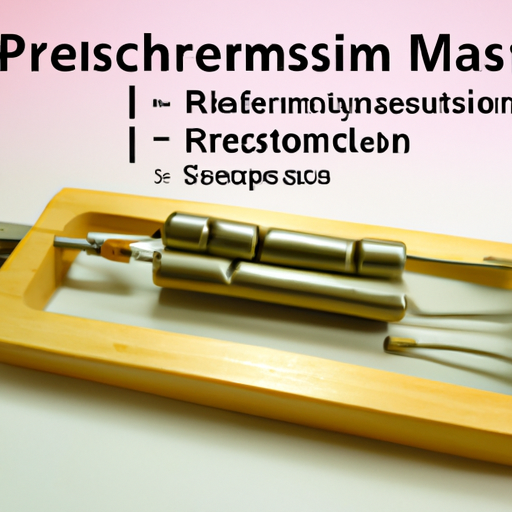
What is the production process of mainstream resistor 3?
The Production Process of Mainstream Resistor 3 I. IntroductionResistors are fundamental components in electronic circuits, serving the critical function of controlling current flow. Among the various types of resistors, Resistor 3 has gained prominence due to its unique characteristics and wide-ranging applications. This blog post will delve into the production process of Resistor 3, exploring its significance in electronics, the materials used, and the steps involved in its manufacturing. II. Types of Resistors A. Overview of Different Resistor TypesResistors come in various forms, each designed for specific applications. The primary categories include:1. **Fixed Resistors**: These resistors have a constant resistance value and are widely used in circuits where precise resistance is required.2. **Variable Resistors**: Also known as potentiometers, these allow users to adjust resistance levels, making them ideal for applications like volume controls.3. **Specialty Resistors**: These include thermistors and photoresistors, which change resistance based on temperature or light exposure, respectively. B. Focus on Resistor 3Resistor 3 is a type of fixed resistor known for its reliability and stability. It typically features a specific resistance value, tolerance, and power rating, making it suitable for various electronic applications, including consumer electronics, automotive systems, and industrial machinery. III. Raw Materials Used in Resistor Production A. Conductive MaterialsThe performance of Resistor 3 largely depends on the conductive materials used in its construction. Common materials include:1. **Carbon**: Often used in carbon film resistors, carbon provides a stable resistance and is cost-effective.2. **Metal Film**: Known for its precision, metal film resistors offer low noise and high stability, making them ideal for high-performance applications.3. **Wirewound**: These resistors are made by winding a metal wire around a ceramic core, providing high power ratings and excellent heat dissipation. B. Insulating MaterialsInsulation is crucial in preventing unwanted current flow. Common insulating materials include:1. **Ceramic**: This material is often used for its excellent thermal stability and electrical insulation properties.2. **Epoxy**: Epoxy resins provide a robust protective layer, enhancing durability and resistance to environmental factors.3. **Other Composites**: Various composite materials are also used to achieve specific performance characteristics. C. Sourcing and Quality Control of Raw MaterialsThe quality of raw materials directly impacts the performance of Resistor 3. Manufacturers implement stringent sourcing and quality control measures to ensure that only the best materials are used. This includes testing for conductivity, thermal stability, and resistance to environmental factors. IV. The Production Process of Resistor 3 A. Design and EngineeringThe production of Resistor 3 begins with careful design and engineering. This phase involves:1. **Circuit Design Considerations**: Engineers must consider the specific requirements of the circuit in which the resistor will be used, including resistance value, tolerance, and power rating.2. **Simulation and Prototyping**: Advanced simulation software is used to model the resistor's performance, allowing for adjustments before physical prototypes are created. B. Manufacturing StepsThe manufacturing process of Resistor 3 involves several key steps:1. **Material Preparation**: - **Sizing and Shaping Conductive Materials**: Conductive materials are cut and shaped to the required dimensions, ensuring uniformity. - **Preparing Insulating Substrates**: Insulating materials are also prepared, often in the form of sheets or coatings.2. **Assembly**: - **Layering Conductive and Insulating Materials**: The conductive and insulating materials are layered according to the design specifications. - **Bonding Techniques**: Various bonding techniques, such as adhesive bonding or thermal bonding, are employed to ensure a strong connection between layers.3. **Trimming and Tolerance Adjustment**: - **Laser Trimming**: This precise method is used to adjust the resistance value by removing small amounts of material. - **Manual Adjustments**: In some cases, manual adjustments are made to fine-tune the resistance.4. **Encapsulation**: - **Coating Techniques**: The resistor is coated with protective materials to enhance durability and prevent damage. - **Environmental Protection**: Encapsulation also provides protection against moisture, dust, and other environmental factors. C. Quality AssuranceQuality assurance is a critical aspect of the production process. Manufacturers implement rigorous testing procedures, including:1. **Testing Procedures**: - **Electrical Testing**: Each resistor is tested for its electrical performance, ensuring it meets specified resistance values and tolerances. - **Mechanical Testing**: Mechanical tests assess the durability and reliability of the resistor under various conditions.2. **Compliance with Industry Standards**: Resistor 3 must comply with industry standards, such as those set by the International Electrotechnical Commission (IEC) and the American National Standards Institute (ANSI). V. Environmental Considerations A. Sustainable Practices in Resistor ProductionAs environmental concerns grow, manufacturers are adopting sustainable practices in resistor production. This includes using eco-friendly materials and reducing energy consumption during manufacturing. B. Waste Management and RecyclingEffective waste management strategies are implemented to minimize waste generated during production. Many manufacturers also focus on recycling materials to reduce their environmental footprint. C. Regulatory ComplianceCompliance with environmental regulations is essential. Manufacturers must adhere to local and international laws regarding waste disposal, emissions, and the use of hazardous materials. VI. Future Trends in Resistor Production A. Technological AdvancementsThe resistor manufacturing industry is witnessing significant technological advancements, including:1. **Automation and Robotics**: Automation is streamlining production processes, increasing efficiency, and reducing labor costs.2. **Smart Resistors**: The development of smart resistors, which can adjust their resistance based on environmental conditions, is gaining traction. B. Market Demand and InnovationsAs electronic devices become more sophisticated, the demand for high-quality resistors continues to rise. Manufacturers are innovating to meet this demand, focusing on improved performance and reliability. C. Potential Challenges and SolutionsDespite advancements, the industry faces challenges such as supply chain disruptions and the need for continuous innovation. Manufacturers must adapt to these challenges by investing in research and development and exploring new materials and technologies. VII. ConclusionIn summary, the production process of Resistor 3 is a complex and meticulous endeavor that involves careful design, high-quality materials, and rigorous testing. As a vital component in modern electronics, Resistor 3 plays a crucial role in ensuring the functionality and reliability of various devices. The importance of quality in resistor manufacturing cannot be overstated, as it directly impacts the performance of electronic circuits. As the industry evolves, embracing sustainable practices and technological advancements will be key to meeting the growing demands of the market. VIII. References- Academic Journals on Electronics and Materials Science- Industry Reports on Resistor Manufacturing Trends- Manufacturer Guidelines and Standards for Resistor ProductionThis blog post provides a comprehensive overview of the production process of mainstream Resistor 3, highlighting its significance in the electronics industry and the meticulous steps involved in its manufacturing.


